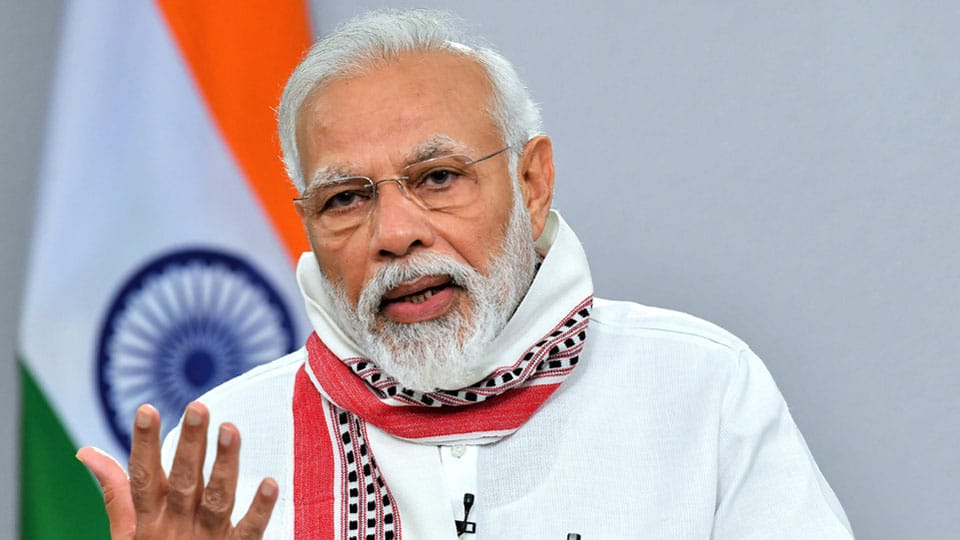By Dr. R. Balasubramaniam
Countries around the world are struggling with the economy slowing down drastically due to the COVID crisis. While lockdowns are being gradually lifted, one is still unsure when there will be light at the end of the economic tunnel. While there is no single solution framework that exists, countries including India will have to chart their own contextual response.
Even before the crisis hit, the global decline impacted India and it was facing a decline in foreign demand and a drop of commodity prices. India was slowly getting locked out from global financial markets, began suffering capital outflows and was experiencing a fall of remittances. In addition to the demand shortfall and financial stress, the COVID crisis also created a supply shock.
Social distancing measures drastically reduced labour supply and increased transaction costs. Unreliability of the domestic and international supply chains has resulted in shortages of key inputs and this can lead to potentially higher prices. Though the existing crisis may taper off, widespread bankruptcies, increased unemployment and under-employment and a depressed investment climate will make its effects persist for a long time.
Though India has responded with a stimulus package totalling nearly 10% of GDP, one needs to understand that going back to a pre-COVID-19 “normal” may not be an option. Before the crisis began, the narrative was around creating a five trillion-dollar economy which meant an economic system that prioritised short-term financial gains at the expense of the well-being of people and health of the planet. But the call of ‘Aatma Nirbhar’ by the Prime Minister seems to have opened up a new perspective that incorporates both the people and eco-system in which they operate.
India rightfully decided to make protecting life as the first priority and the containment strategy focused on this. The lockdown gave the health systems time to organise itself, prepare for the possible community spread of the infection and ensure that adequate medical supplies and strategies are put in place. Apart from the costs incurred on identifying positive patients, containing and quarantining them, tracking and tracing contacts, the State is spending enormous amounts of public resources on setting up COVID Hospitals and in the treatment of patients.
The initial unpreparedness of the Government in meeting urgent social challenges was evident from the manner in which the migrant crisis unfolded. Many households live a hand to mouth existence and did not have the resources to cope with the lockdowns and quarantines. Many depend on farming and self-employment, and informality is common even among wage earners. Most of them operate in an economic ecosystem that necessitates physical proximity and working from home is irrelevant in their context. Protecting their earnings and reaching them through direct bank transfers, is considerably more challenging than in formalised economies.
While the larger issue of food security is being managed through PDS, malnutrition among children is a concern, especially now that Schools and Anganwadis are shut. Existing social protection and social assistance programmes like MGNREGS are seeing an increased demand and need to be rapidly scaled up and coverage extended. Existing DBT programmes will have to be supplemented by mobile or digital payment channels now that most Indians have been brought under the JAM ambit.
While the Government is now responding to address these social concerns, it cannot lift its sights from the financial sector vulnerabilities. This is the time to ramp up supervision capacity and get a clear sense of the risks faced by banks, non-banking financial institutions and other micro-credit providers. Traditionally, these have been weak areas of regulation and India needs to ensure adequate safeguards before fully operationalising the stimulus package.
In financial crises, both market infrastructures and the set of contracts that underpin the conduct of business come under stress. This is especially so in the MSME sector that is already under considerable strain from the last few years. The Government needs to stay focused on protecting workers along with supporting jobs and firms. RBI and the Ministry of Finance has to be prepared to stabilise financial markets. Frameworks identifying the measures needed to mitigate volatility and to handle disorderly market functioning should be put in place. Clarity on how to preserve our forex reserves is also critical.
Now that it is becoming clear that we are in for the long haul, liquidity constraints becoming a solvency problem is real. There will be a real loss of economic value and these losses have to be absorbed by the Government. The stimulus package envisions stabilising the financial sector, continuity of basic services, employment guarantees, wage subsidies, working capital finance and debt service relief. Aatma Nirbhar has an explicit focus on streamlining land, labour and liquidity laws and envisages structural reforms and creating a facilitatory infrastructure. These decisions taken by the Government are in the right direction but what can stand in the way of implementing it is a ‘low-capacity’ public delivery system, red-tapism, crony capitalism, rent seeking behaviour of the executive and a high degree of informality. If the promised system change under Aatma Nirbhar addresses this, then one can surely see the resurgence of the Indian economy sooner than later.
[Dr. R. Balasubramaniam, Chairman of the public policy thinktank GRAAM, is a visiting professor at Cornell University, USA and IIT-Delhi. He can be reached at [email protected]]








Recent Comments